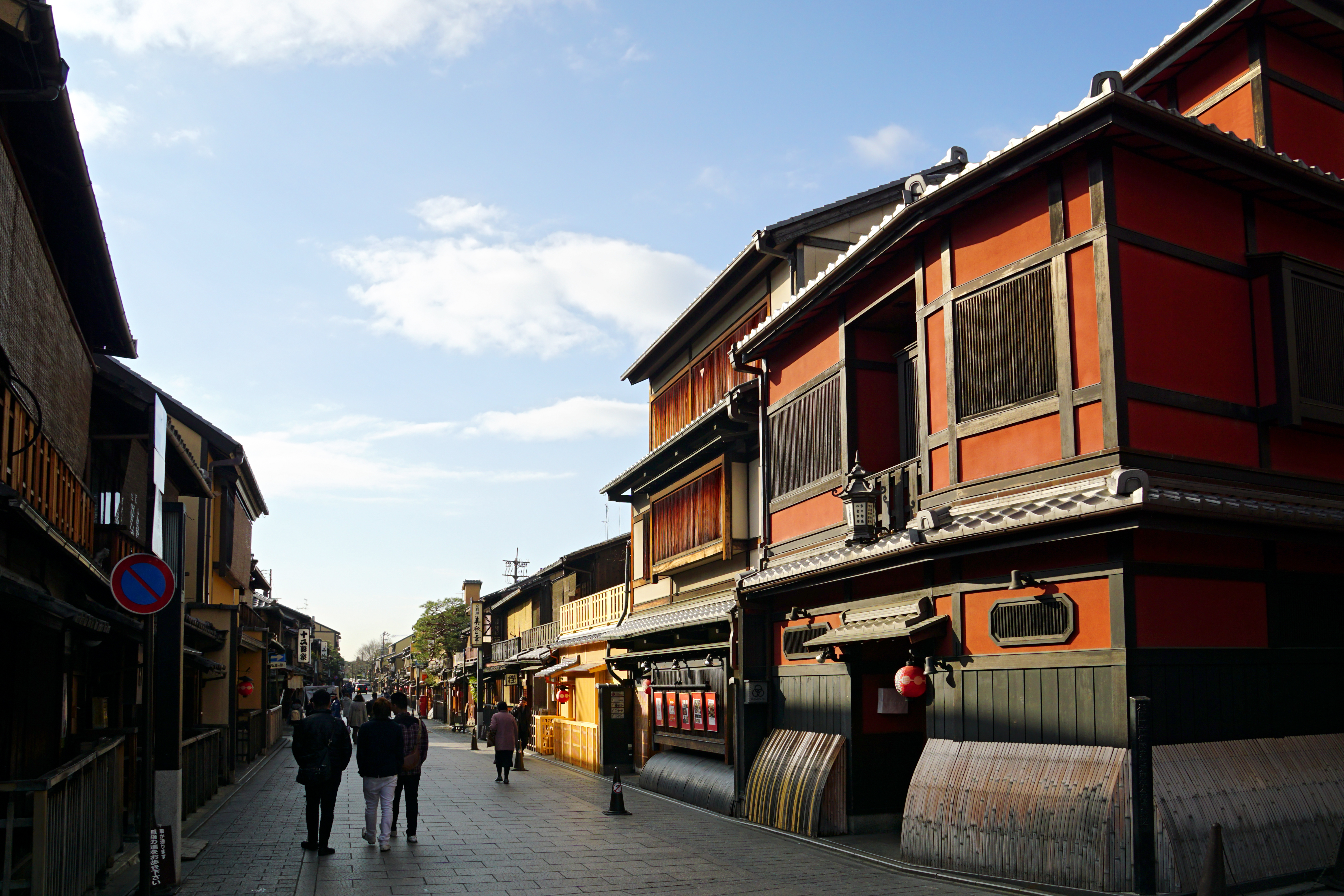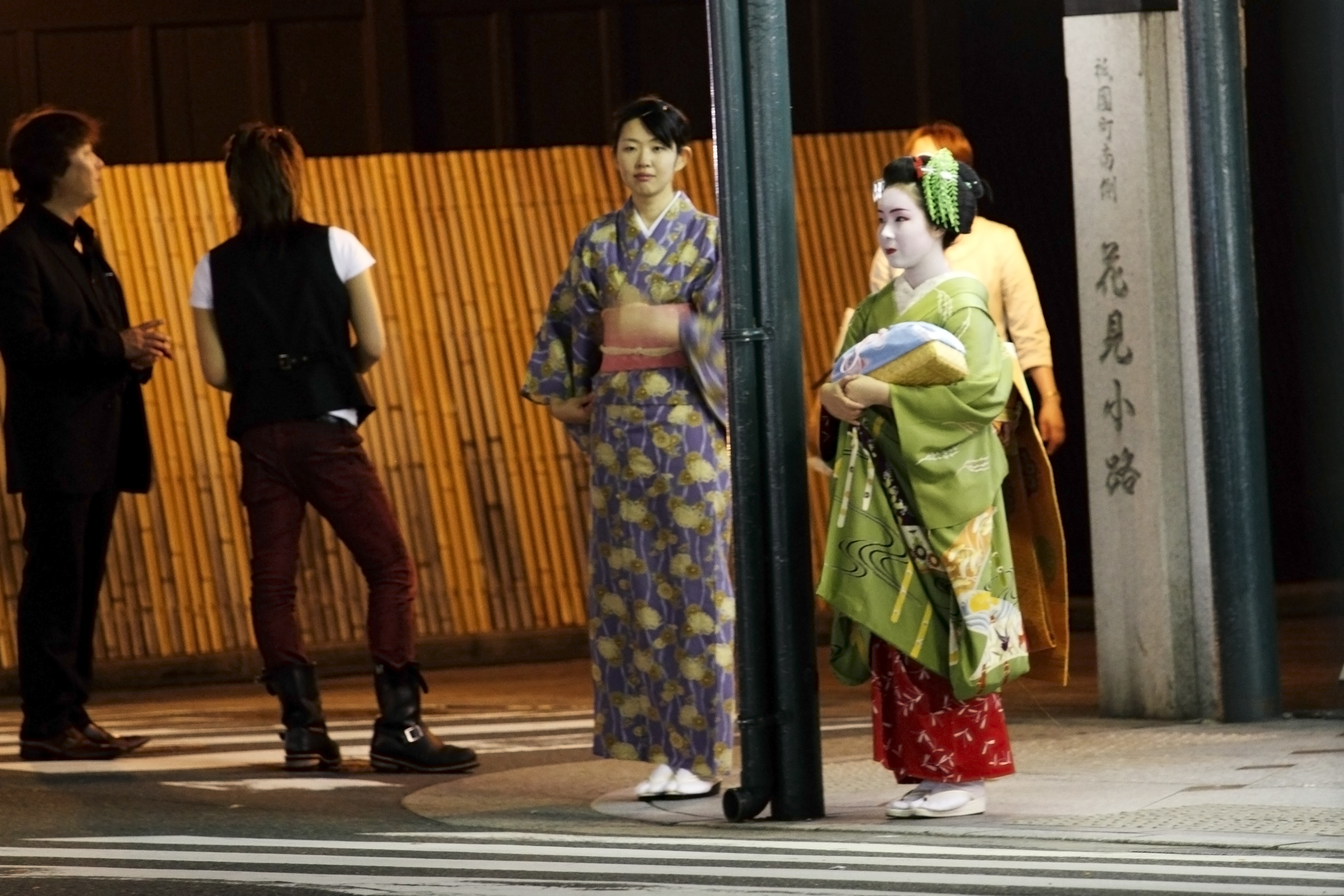|
Ochaya
In Japan, an is an establishment where patrons are entertained by geisha. In the Edo period, ''chaya'' could refer to establishments serving tea and drinks (), offering rooms for rent by the hour (), or brothels ( in Osaka, in Edo). However, in the modern day, refers exclusively to the establishments within Kyoto in which geisha work and entertain their clients, though the term is sometimes used to describe all establishments used by geisha to entertain guests, irrespective of location. Equivalent establishments in locations outside of Kyoto are known as , meaning "restaurant", referring to a traditional Japanese-style restaurant where geisha may entertain. Terminology Though the term literally means "tea house", the term follows the naming conventions of buildings or rooms used for Japanese tea ceremony, known as ; as such, though tea is served at as an ordinary beverage, it is not, unlike teahouses and tearooms found throughout the world, its sole purpose. When used as ... [...More Info...] [...Related Items...] OR: [Wikipedia] [Google] [Baidu] |
Ichiriki Ochaya
The , formerly , is an historic ("tea house") in Kyoto, Japan. It is located at the southeast corner of Shijō Street and Hanami Lane, its entrance right at the heart of the Gion Kobu district. It is considered an exclusive and high-end establishment; access is invitation only while its fame is often associated with the event. The 9th teahouse proprietor is Jirou-emon Sugiura. History The Ichiriki is more than 300 years old, and has been a major centerpiece of Gion since the beginning of the entertainment district. Like other in Gion, the Ichiriki is used to hold parties () by geisha, the Ichiriki in particular having traditionally entertained men of political and business power. The house is run by the family, and the nameplate on the entrance gate reads , the name of the 9th generation head. Name The curtains at the entrance feature the characters and printed in black on a dark red ground, arranged to resemble the character . It is said that the establishment was orig ... [...More Info...] [...Related Items...] OR: [Wikipedia] [Google] [Baidu] |
Hanamachi
A is a district where geisha live and work in Japan. Each typically has its own name, crest, and distinct geisha population, with geisha not typically working outside of their own district. usually contain (geisha houses) and (teahouses where geisha entertain). Historically, could contain a high number of and , and would also contain a as well – a communal meeting place for geisha, typically containing a theater, rooms where classes in the traditional arts could be held, and a (registry office) who would process a geisha's pay, regulation of the profession, and other related matters. Gion, a geisha district in Kyoto, also has a vocational school, called . Many of the teachers there are designated as Living National Treasures. were preceded by the registered red-light districts of Japan, known as . Three were established in Japan in the early 1600s: Shimabara in Kyoto in 1640,Avery, Anne Louise. ''Flowers of the Floating World: Geisha and Courtesans in Japanes ... [...More Info...] [...Related Items...] OR: [Wikipedia] [Google] [Baidu] |
Gion
is a district of Higashiyama-ku, Kyoto, Japan, originating as an entertainment district in the Sengoku period, in front of Yasaka Shrine (Gion Shrine). The district was built to accommodate the needs of travellers and visitors to the shrine. It eventually evolved to become one of the most exclusive and well-known geisha districts in all of Japan. Gion is the Japanese translation (via Chinese ''Qiyuan'') of the Buddhist term Jetavana. Yasaka Shrine, located in this district is the center of the Gion faith. The geisha in Kyoto do not refer to themselves as geisha, instead using the local term . While the term geisha means "artist" or "person of the arts", the more direct term means essentially "a woman of art". Divisions Gion houses two , or geisha districts: and . The two were originally the same district, but split many years ago. Gion Kobu is larger, occupying most of the district including the famous Hanamikoji street, while Gion Higashi is smaller and occupies t ... [...More Info...] [...Related Items...] OR: [Wikipedia] [Google] [Baidu] |
Geisha
{{Culture of Japan, Traditions, Geisha {{nihongo, Geisha{{efn, {{IPAc-en, lang, ˈ, ɡ, eɪ, ., ʃ, ə, {{IPA, ja, ɡei.ɕa, ɡeː-, lang{{cite book, script-title=ja:NHK日本語発音アクセント新辞典, publisher=NHK Publishing, editor=NHK Broadcasting Culture Research Institute, date=24 May 2016, lang=ja, 芸者, also known as {{nihongo, , 芸子, geiko{{efn, {{IPA, ja, ɡei.ko, ɡeː-, lang, {{citation needed span, in Kyoto and Kanazawa, date=May 2025 or {{nihongo, , 芸妓, geigi{{efn, {{IPA, ja, ɡeꜜi.ɡi, ɡeꜜː-, -ŋi, lang , are female Japanese people, Japanese performing arts, performing artists and entertainers trained in performing arts#Japan, traditional Japanese performing arts styles, such as Japanese traditional dance, dance, Music of Japan, music and singing, as well as being proficient conversationalists and hosts. Their distinct appearance is characterised by long, trailing kimono, nihongami#geisha, traditional hairstyles and {{transliteration, ja, o ... [...More Info...] [...Related Items...] OR: [Wikipedia] [Google] [Baidu] |
Tea House
A teahouse or tearoom (also tea room) is an establishment which primarily serves tea and other light refreshments. A tea room may be a room set aside in a hotel, especially for serving afternoon tea, or may be an establishment that only serves cream tea. Although the function of a tea room may vary according to the circumstance or country, tea houses often serve as centers of social interaction, like coffee houses. Some cultures have a variety of distinct tea-centered establishments of different types, depending on the national tea culture. For example, the British or American tea room serves afternoon tea with a variety of small snacks. East Asia Throughout China and Japan, a teahouse ( Chinese: , or , ; Japanese: ; Standard Nepali: ''chiya ghar'' ()) is traditionally a place which offers tea to its customers. People gather at teahouses to chat, socialize and enjoy tea, and young people often meet at teahouses for dates. The Guangdong (Cantonese) style teahouse ... [...More Info...] [...Related Items...] OR: [Wikipedia] [Google] [Baidu] |
Geisha
{{Culture of Japan, Traditions, Geisha {{nihongo, Geisha{{efn, {{IPAc-en, lang, ˈ, ɡ, eɪ, ., ʃ, ə, {{IPA, ja, ɡei.ɕa, ɡeː-, lang{{cite book, script-title=ja:NHK日本語発音アクセント新辞典, publisher=NHK Publishing, editor=NHK Broadcasting Culture Research Institute, date=24 May 2016, lang=ja, 芸者, also known as {{nihongo, , 芸子, geiko{{efn, {{IPA, ja, ɡei.ko, ɡeː-, lang, {{citation needed span, in Kyoto and Kanazawa, date=May 2025 or {{nihongo, , 芸妓, geigi{{efn, {{IPA, ja, ɡeꜜi.ɡi, ɡeꜜː-, -ŋi, lang , are female Japanese people, Japanese performing arts, performing artists and entertainers trained in performing arts#Japan, traditional Japanese performing arts styles, such as Japanese traditional dance, dance, Music of Japan, music and singing, as well as being proficient conversationalists and hosts. Their distinct appearance is characterised by long, trailing kimono, nihongami#geisha, traditional hairstyles and {{transliteration, ja, o ... [...More Info...] [...Related Items...] OR: [Wikipedia] [Google] [Baidu] |
Okiya
An is the lodging house/drinking establishment to which a or geisha is affiliated with during her career as a geisha. The is typically run by the "mother" () of the house, who handles a geisha's engagements, the development of her skills, and funds her training through a particular teahouse. Though a geisha is legally required to be registered to an in order to work, and may live there as a trainee, it is not a legal requirement for geisha to live within their .Dalby 1983 p192 A geisha's engagements at parties, and her lessons in singing, traditional dance, musical instruments and tea ceremony are also booked through her . An and its attached teahouse typically has its own "branch" of art names linking its geisha and together, usually through the use of a shared prefix; for example, many of the geisha trained at the Dai-Ichi teahouse in Pontochō have names that begin with . Living arrangements Many geisha, particularly those working in more traditional geisha communities ... [...More Info...] [...Related Items...] OR: [Wikipedia] [Google] [Baidu] |
Maiko
A is an apprentice geiko in Kyoto (in Tokyo it is geisha). Their jobs consist of performing songs, dances, and playing the or other traditional Japanese instruments for visitors during banquets and parties, known as . are usually aged 17 to 20, and graduate to geiko status after a period of training that includes traditional dance, the , , and, in Kyoto only, learning the Kyoto dialect. The apprenticeship ranges from a few months to a year or two years, although apprentices too old to dress as may advance to geiko despite still training. Apprentice geisha in other locations in Japan are known by other terms, such as for apprentices in Tokyo. The traditions of apprentice geisha in these areas diverge from those in Kyoto, sometimes to a considerable degree, including an apprentice's appearance and the structure of her apprenticeship. Work In the morning, take lessons in the traditional arts. At night, they dance, sing, play the , and serve visitors at exclusive (teaho ... [...More Info...] [...Related Items...] OR: [Wikipedia] [Google] [Baidu] |
Kyoto
Kyoto ( or ; Japanese language, Japanese: , ''Kyōto'' ), officially , is the capital city of Kyoto Prefecture in the Kansai region of Japan's largest and most populous island of Honshu. , the city had a population of 1.46 million, making it the List of cities in Japan, ninth-most populous city in Japan. More than half (56.8%) of Kyoto Prefecture's population resides in the city. The city is the cultural anchor of the substantially larger Greater Kyoto, a metropolitan statistical area (MSA) home to a census-estimated 3.8 million people. It is also part of the even larger Keihanshin, Keihanshin metropolitan area, along with Osaka and Kobe. Kyoto is one of the oldest municipalities in Japan, having been chosen in 794 as the new seat of Japan's imperial court by Emperor Kanmu. The original city, named Heian-kyō, was arranged in accordance with traditional Chinese feng shui following the model of the ancient Chinese capitals of Chang'an and Luoyang. The emperors of Japan ruled fro ... [...More Info...] [...Related Items...] OR: [Wikipedia] [Google] [Baidu] |
Tatami
are soft mats used as flooring material in traditional Japanese-style rooms. They are made in standard sizes, twice as long as wide, about , depending on the region. In martial arts, tatami are used for training in a dojo and for competition. Tatami are covered with a weft-faced weave of on a warp of hemp or weaker cotton. There are four warps per weft shed, two at each end (or sometimes two per shed, one at each end, to reduce cost). The (core) is traditionally made from sewn-together rice straw, but contemporary tatami sometimes have compressed wood chip boards or extruded polystyrene foam in their cores instead or as well. The long sides are usually with brocade or plain cloth, although some tatami have no edging. File:Modern tatami.JPG, Machine-sewing of tatami File:Tatami sectional view.jpg, Cross-section of a modern tatami with an extruded polystyrene foam core File:Men Making Tatami Mats, 1860 - ca. 1900.jpg, Making tatami mats, late 19th century. File:Tatami.jpg, ... [...More Info...] [...Related Items...] OR: [Wikipedia] [Google] [Baidu] |






